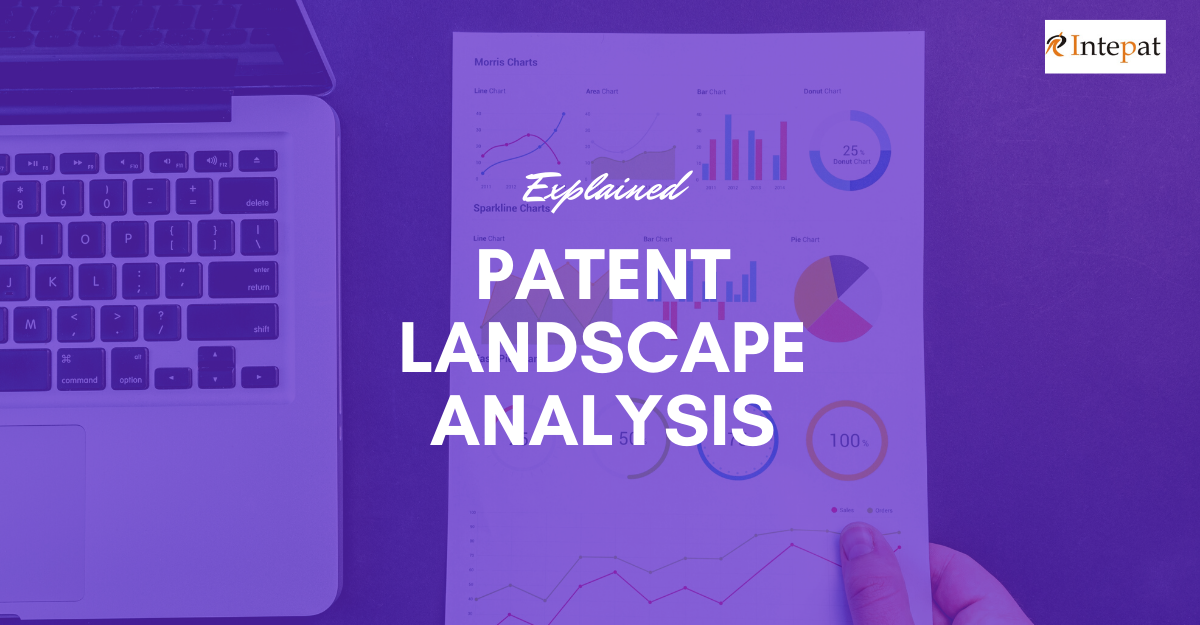More than 3, 92,617 patents were filed all around the world in 2019. Countries have realized the importance of protecting their inventions and the rights of the inventors for economic and social welfare. Patent registration and Intellectual Property rights have become the most common words in the research community. This vast data pool is a definite turn as it signifies that people have understood the importance of patents. But, when it comes to searching for information from this voluminous data, the task becomes tedious.
A structured and clean strategy to search can yield accurate search results quickly. Patent landscape analysis helps us with this tiresome task, which is inevitable in any successful business.
The Essence of Patent Landscape Analysis
Patent Landscape Analysis is an in-depth, extensive study to gain information about the existing technology and market trends in a particular field. It is also known as patent mapping that involves the use of specialized computer software database and expert human intelligence. The patent search results obtained through this analysis will help in the decision making of several businesses, start-ups, research organizations, and universities.
Purpose of Patent Landscape Analysis
Patent mapping can act as a factual report and help departments to arrive at solutions in critical decision making and other business issues. Let us get some essential insight into how various departments apply this analysis.
Investors
Investors who are looking to invest in particular research can get to know the risks, opportunities, already existing studies, and the worth of the project. Business strategists can plan on company acquisitions that can yield a steady and long term growth to their business.
Business development team
Patent landscape analysis will bring out all the latest technology and innovations. Business development teams in a company can identify such latest trends and techniques that can help in taking their business to the next level. Important decisions such as initiating a merger, partnering, and licensing of technology can be quickly made based on this analysis. It also helps them in identifying relevant suppliers, consumers, and competitors in the field.
Marketing team
The Patent Landscape Analysis helps marketing teams of the firms to gain an idea of the trends associated with technology. This knowledge and adequate market research, will help them to decide on the commercial stage of the technology and decide on the products that would have a good response in the market.
The legal team
Legal teams can use this analysis to know the patenting trends in related technology. It can also uncover new research opportunities through a thorough search. The search can highlight patent infringers and licensing opportunities.
The R&D team
The researchers can gain knowledge of the current state of the art in their field. This analysis will give ideas on how to innovate, build, or improve their existing designs.
HR team
The Human Resources department will get to know about the inventors through their patents and can hire them or invite them to collaborate and add value to their organization.
Necessary Steps of Patent Landscape Analysis
Identify the purpose
Before beginning patent mapping, the foremost step is to know the purpose of the analysis. The reason for carrying out the analysis should be framed using the inputs from all the departments (business development, marketing, HR, R&D, and legal). Once the key areas of search and its purpose are identified, the analysis begins.
Search and filter data
The purpose of landscape analysis derived from all the departments and their current status is studied. A search is launched in patents, literature, and other market-related documents, to filter all relevant results. The process continues until a landscape with related documents only is formed. The quality of the search result is essential as the rest of the steps depend on it.
Cleaning and normalizing the data
The filtered search result should match with the technical criteria of the purpose of analysis. The data is further cleaned to improve its accuracy. A patent analyst can work on choosing the results that are consistent with the aim of analysis given by various departments. Normalizing the data can help in a better understanding of the list of organizations working in the particular field, their portfolio, the researchers working for them, and collaborations or partnerships between different organizations.
Categorization
Patent experts from relevant technical fields will classify the patents into different categories. The choice of categories will depend upon the purpose for which the patent landscape analysis is done. Some of the most commonly fixed categories include products, market, consumer benefits, inventor, technology, and rankings.
Presenting the Analysis
The consolidated and categorized data is put in graphical representations such as tables, graphs, charts, and patent mapping visualizations. Clear cut presentations will be a valuable asset and bring meaning to the whole patent landscape analysis process. Additionally, the graphics must be easy to interpret when they are referred to in the future.
Monitoring and updating the analysis
Creating the base for patent mapping is a time-consuming process. But, once done, this analysis can be reviewed and updated based on the latest inventions on a monthly or quarterly basis. Monitoring and updating recent inventions into the relevant category is of utmost importance for the analysis to stay productive.
Patent Landscape Analysis is a single process when done that can benefit all departments of an organization. Every company must make use of the abundant patent information available to stay ahead in the competition and make wise marketing, R&D, and patenting decisions.
Therefore, experienced patent expert teams can always work on patent mapping, helping you to the right decisions and better profits in your business.




